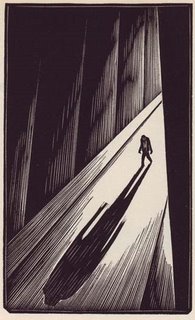








 Owen was the first really good artist I met when I started working at Hanna Barbera in 1978. He'd just sit at his desk with a 4b pencil in one hand and a cigarette in the other, drawing these quick flowing lines which became great, expressive drawings of Scooby Doo, or Jabberjaws. Owen's first job in the animation business was inbetweener on "Snow White". He did layouts for Chuck Jones at Warner Bros in the '40s. After the war, he did a lot of comics for DC; "Bob Hope" and "Fox & Crow" and lots of others that I haven't seen. Bill Hanna loved Owen's drawings, though Owen later told me he never "got" the HB style like the Flintstones or Yogi Bear. The "flat" design-ey style was not something he understood - He drew "classic" cartoons and he drew them well. As an animator in the early '80s I would always be happy to get a scene laid out by Owen, because the drawings were so loose and expressive - it was much nicer to work from a loose drawing, where you could see the lines of action etc., rather than a tight, cleaned up drawing. (I wish I would have saved some of those drawings, but I took it for granted, and it was "only Scooby Doo!) Years later I was lucky to have Owen working for me at Warner Animation on the first season of "Tiny Toons". I hope you enjoy looking at these drawings by a "really good artist".
Owen was the first really good artist I met when I started working at Hanna Barbera in 1978. He'd just sit at his desk with a 4b pencil in one hand and a cigarette in the other, drawing these quick flowing lines which became great, expressive drawings of Scooby Doo, or Jabberjaws. Owen's first job in the animation business was inbetweener on "Snow White". He did layouts for Chuck Jones at Warner Bros in the '40s. After the war, he did a lot of comics for DC; "Bob Hope" and "Fox & Crow" and lots of others that I haven't seen. Bill Hanna loved Owen's drawings, though Owen later told me he never "got" the HB style like the Flintstones or Yogi Bear. The "flat" design-ey style was not something he understood - He drew "classic" cartoons and he drew them well. As an animator in the early '80s I would always be happy to get a scene laid out by Owen, because the drawings were so loose and expressive - it was much nicer to work from a loose drawing, where you could see the lines of action etc., rather than a tight, cleaned up drawing. (I wish I would have saved some of those drawings, but I took it for granted, and it was "only Scooby Doo!) Years later I was lucky to have Owen working for me at Warner Animation on the first season of "Tiny Toons". I hope you enjoy looking at these drawings by a "really good artist".





 It tells the story of a youn artist wh
It tells the story of a youn artist wh


